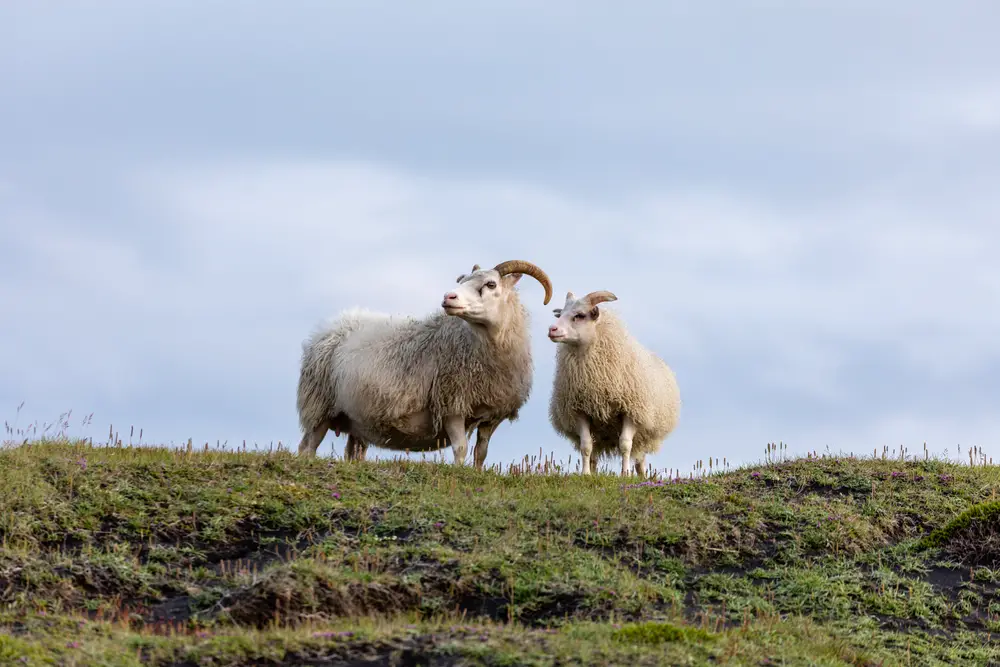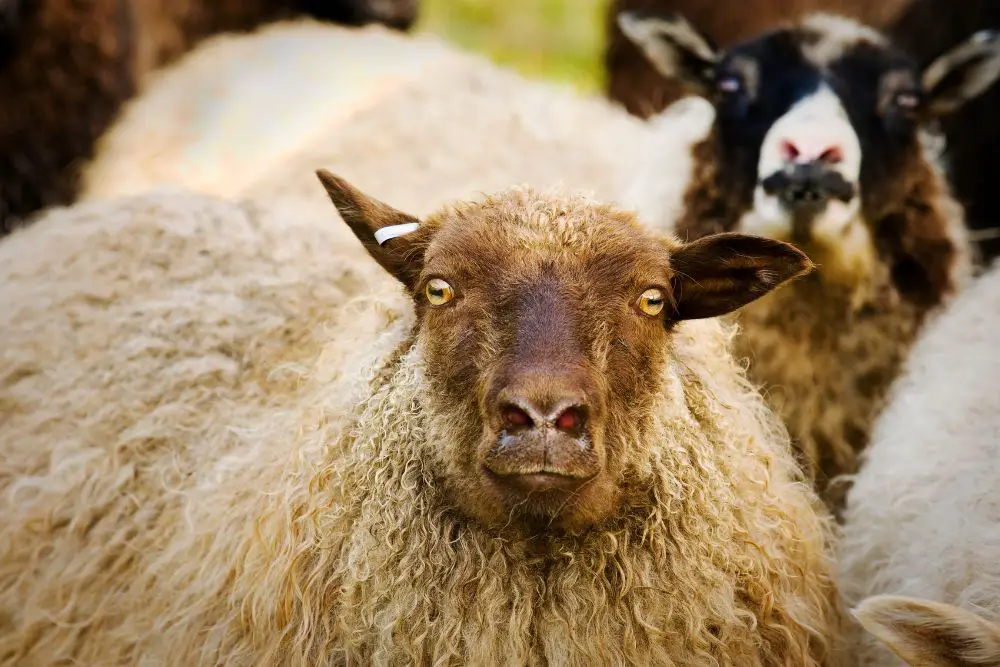Icelandic Sheep are more than 1,000 years old and retain so much purity. They thrive in harsh winter conditions and may be the perfect choice if you're seeking a robust, medium-sized, domestic sheep that produces two types of quality wool, excellent milk and delicious mutton.
This article covers the history of the Icelandic sheep, their breed attributes, and examines the characteristics of their dual-coated wool in detail, so you’ll know if this is the right breed for your farm.
Table of Contents
Where do Icelandic Sheep Come From?
Icelandic sheep are in the group of sheep known as the Northern European Short-tailed sheep. They are thought to have originated elsewhere but were brought to Iceland by Vikings in the tenth century.
Their population has been largely untouched by other breeds since their introduction to North America and as such, they are sturdy, feed efficient, and have excellent immune systems.
Throughout Icelandic history, Icelandic sheep have played a pivotal role in providing meat, wool, and milk to its people. Today, for every person living in Iceland, there are two Icelandic sheep.
Icelandic sheep are officially registered with ISBONA, in accordance with their by-laws which require that sheep are tagged in a specific manner, and registration records are done through the Canadian Livestock Records Corporation in North America.
What are the Characteristics of the Icelandic Sheep?
The Icelandic sheep is medium-sized and has light bones and a slender body. They have horns, but a polled (hornless) variety exists which is known as the Kleifa.

| Characteristics | Description |
| Origin | Europe |
| Appearance | Double-coated and come in many color variations Their skin color depends on their coat color Bare legs and bare faces, and with a short tail Shoulders should be broad but rounded. They should also have an overall muscular and lean appearance, good conformation, with strong legs and a straight back. |
| Wool | Average fiber diameter of 28 to 40 microns, and a staple length of 6 to 8 inches. The spinning count is 50 to 53. The fibers are straight, unlike the Thel. The undercoat (Thel) has a fiber diameter ranging from 20 to 21 microns, and a spinning count of 65 to 70, with a staple length of 3 to 4 inches. The fiber itself is crimped. |
| Weight | Rams weigh between 200 and 220 pounds while ewes weigh between 130 and 145 pounds. |
| Fertility | They are seasonal breeders with most Icelandic lambs being born in multiple sets – from triplets all the way up to sextuplets. Ram lambs reach sexual maturity at 5 months old and make good breeding stock despite their young age, capable of breeding year-round. |
| Meat | Distinctive flavor |
| Environment | Very cold-hardy and thrive in European winters |
| Common Uses | A triple-purpose breed which is used for wool, meat and milk in Europe. |
What Kind of Fleece Does the Icelandic Produce?
Icelandic sheep produce a premium fleece that can be used in a variety of ways and is highly desirable due to its unique characteristics. Icelandic sheep have the widest color range of wool as the breed can come in many colors.
This breed of sheep produces two types of wool, an outer coat called a Tog, and an inner coat called a Thel. If both the Thel and Tog are combined, it creates a unique yarn called Lopi, which is incredibly soft and well-insulated, and used in making winter clothing.
Why Should You Raise Icelandic Sheep?
There are many reasons why you should consider raising Icelandic Sheep on your sheep farm:
- They have an incredibly strong immune system
- Can live in difficult farming conditions
- Meat has a distinctive flavor and they are good for meat production
- Ewes are known for easy lambing (175 – 220%) and carry the Thoka gene for multiple births
- Icelandic ewes can continue lambing for up to 10 years
- Dual-coated fleece makes for excellent wool production
- Pelts can be used for interior furnishings
- Icelandic wool is used in felting and in weaving everything from sweaters to rugs
- Handspinners love the fiber quality, so Icelandic fleece is always in high demand
- Leader sheep exist within flocks and have the innate ability to lead other sheep to safety
- Feed efficiency is well known in this breed
- Icelandic sheep are also known for prolific milk production

